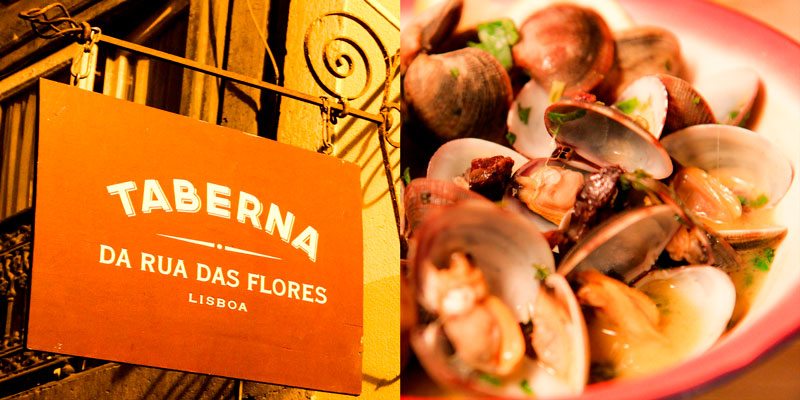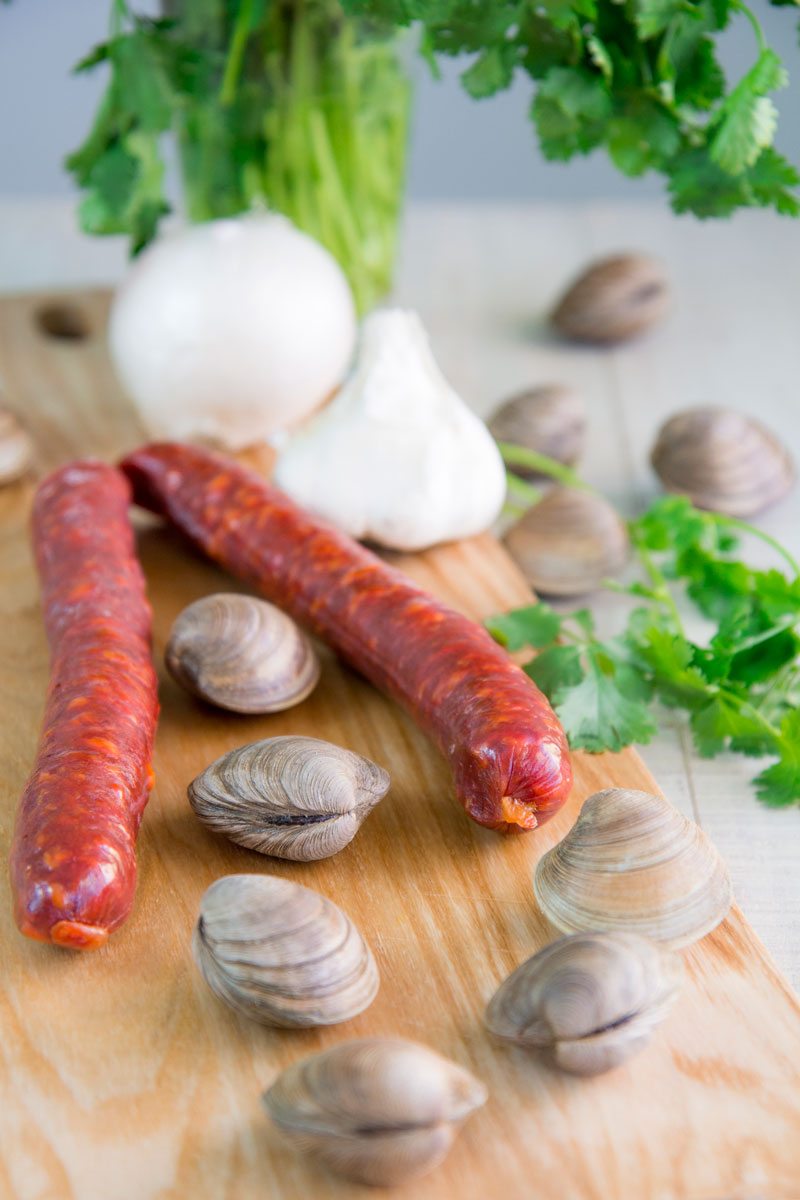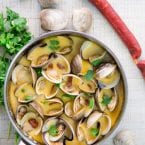Portuguese clam stew is a classic cozy dish with chorizo and cilantro.

The clams stew with chorizo is a typical recipe of the Portuguese cuisine. Indeed, the ingredients of this delicious dish are prevalent and popular in Portugal: clams, cilantro, and chorizo. The pairing of pork meat with clams is particularly traditional and protagonist of another classic dish: the Carne de Porco à Alenteja.
I tried the Portuguese clams stew for the first time in Lisbon, at the restaurant Taberna Da Rua Das Flores, and it has been love at the first bite!

CLEANING THE CLAMS
Even if it’s possible to make the Portuguese clams stew with canned or frozen clams, I strongly suggest you to use live clams. The process will be longer, but the taste will pay off! If you decide to use live clams, cook them as soon as possible: the more you wait, the more will be difficult to clean the sand out of clams.
First of all, check them one by one and discard any opened or shell broken. After that, rinse the clams under running water. Now, dissolve 4 tbsp of sea salt into 4 Qt of drinking cold water, whisking with a wooden spoon. Then, place the clams into a non-metallic bowl and cover with the salted water: if the clams are not entirely submerged, add more salted water. Finally, store the bowl in the back of the fridge. Let the clams expel sand and dirt at least 2 hours up to 3 hours.
In this process, it is critical protect the clams against loud noises, highlights, and sudden movements.




Portuguese Clam Stew
- Yield: 4 servings 1x
Ingredients
- 50 Big clams (or 80 small clams)
- 3 oz 85 g chorizo
- 1 small white onion
- 3 cloves garlic
- 1/2 cup 125 ml white wine
- 1 little bunch cilantro
- 4 tbsp extra-virgin olive oil
Instructions
CLEANING THE CLAMS
- Even if it’s possible to make the Portuguese clams stew with canned or frozen clams, I strongly suggest you to use live clams. The process will be longer, but the taste will pay off! If you decide to use live clams, cook them as soon as possible: the more you wait, the more will be difficult to clean the sand out of clams.
- First of all, check them one by one and discard any opened or shell broken. After that, rinse the clams under running water. Now, dissolve 4 tbsp of sea salt into 4 Qt of drinking cold water, whisking with a wooden spoon. Then, place the clams into a non-metallic bowl and cover with the salted water: if the clams are not entirely submerged, add more salted water. Finally, store the bowl in the back of the fridge. Let the clams expel sand and dirt at least 2 hours up to 3 hours.
- In this process, it is critical protect the clams against loud noises, highlights, and sudden movements.
ONION AND GARLIC SAUCE
- First of all, peel and slice the onion finely, then peel the garlic cloves. After that, pour 3 tbsp of extra-virgin olive oil into a saucepan big enough to contain the clams, and place over medium heat. Now, sautè the onions and garlic until pale golden and translucent. Finally, transfer the vegetables into a mixer and blend until smooth and consistent.
STIR-FRIED CHORIZO
- Now, slice the chorizo, and cut the slices into halves. After that, pour 1 tbsp of extra-virgin olive oil into the saucepan, and stir-fry the chorizo until the surface becomes golden and crunchy, but the inner is still soft.
PORTUGUESE CLAMS STEW
- Once cleaned, rinse again thoroughly the clams one to one under running water, then pour them into the saucepan along with the seared chorizo and cook a couple of minutes. Now, raise the flame and baste with the white wine. Let the alcoholic part of the wine evaporate, then low the flame to medium, and add the onion and garlic sauce. Finally, stir, close the saucepan with a lid, and cook until the clams open their shells. Discard any unopened clams.
- Eventually, garnish with the leaves of a small bunch of cilantro and serve immediately.
- Category: Main
- Cuisine: Portuguese






















OBSESSED with this recipe. I make it all the time.
This sounds delicious!